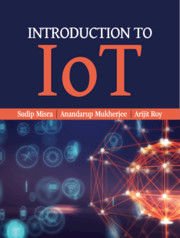11 - Fog Computing and Its Applications
Published online by Cambridge University Press: 09 January 2021
Summary
Learning Outcomes
After reading this chapter, the reader will be able to:
Understand the concept of Fog computing and its features
List the salient features of a Fog computing architecture
Identify the requirements of a Fog computing architecture
Understand the importance of Fog computing through real-life use cases and identify its application scope in IoT
Introduction
In the Internet of Things (IoT), billions of Things connect through wired or wireless connectivity. These Things or devices produce a huge volume of data, which are typically transmitted to the cloud for analysis. Sometimes, the process of transmitting the data to the cloud and analyzing the data may consume a significant amount of time, which is undesirable for time-critical applications, such as healthcare. Therefore, providing real-time services is a major challenge in cloud computing. The concept of Fog computing was introduced considering the high latencies involved in cloud computing. This chapter aims to provide an insight into the fog computing architecture and how it reduces the latency of data processing and transmission.
In the IoT architecture, physical devices transmit data to the cloud. After specific processing of these data, service is provided to the end user applications. Fog computing follows a distributed architecture, which enables processes to execute near the edge of the devices to avoid service latency. A fog layer is an intermediate layer between the physical IoT devices and the cloud. The term, fog computing, was coined by Cisco.
In Figure 11.1, we depict the difference between the basic architecture of cloud and fog computing. In traditional cloud architecture, all data from the devices are transmitted to the cloud directly and then, processed in order to receive the final end user services. These end user services may be in the form of results of analytics, visualizations, and other such processed information. In fog computing architecture, time-sensitive data from different devices are transmitted to the fog devices at the fog layer. Further, data are processed to serve an end user application. Moreover, based on the requirements, the data are transmitted to the cloud layer for long-term storage.
Essential characteristics in fog computing
A fog computing platform resides between cloud and physical IoT devices; it provides processing, storage, and networking services.
- Type
- Chapter
- Information
- Introduction to IoT , pp. 256 - 268Publisher: Cambridge University PressPrint publication year: 2021

